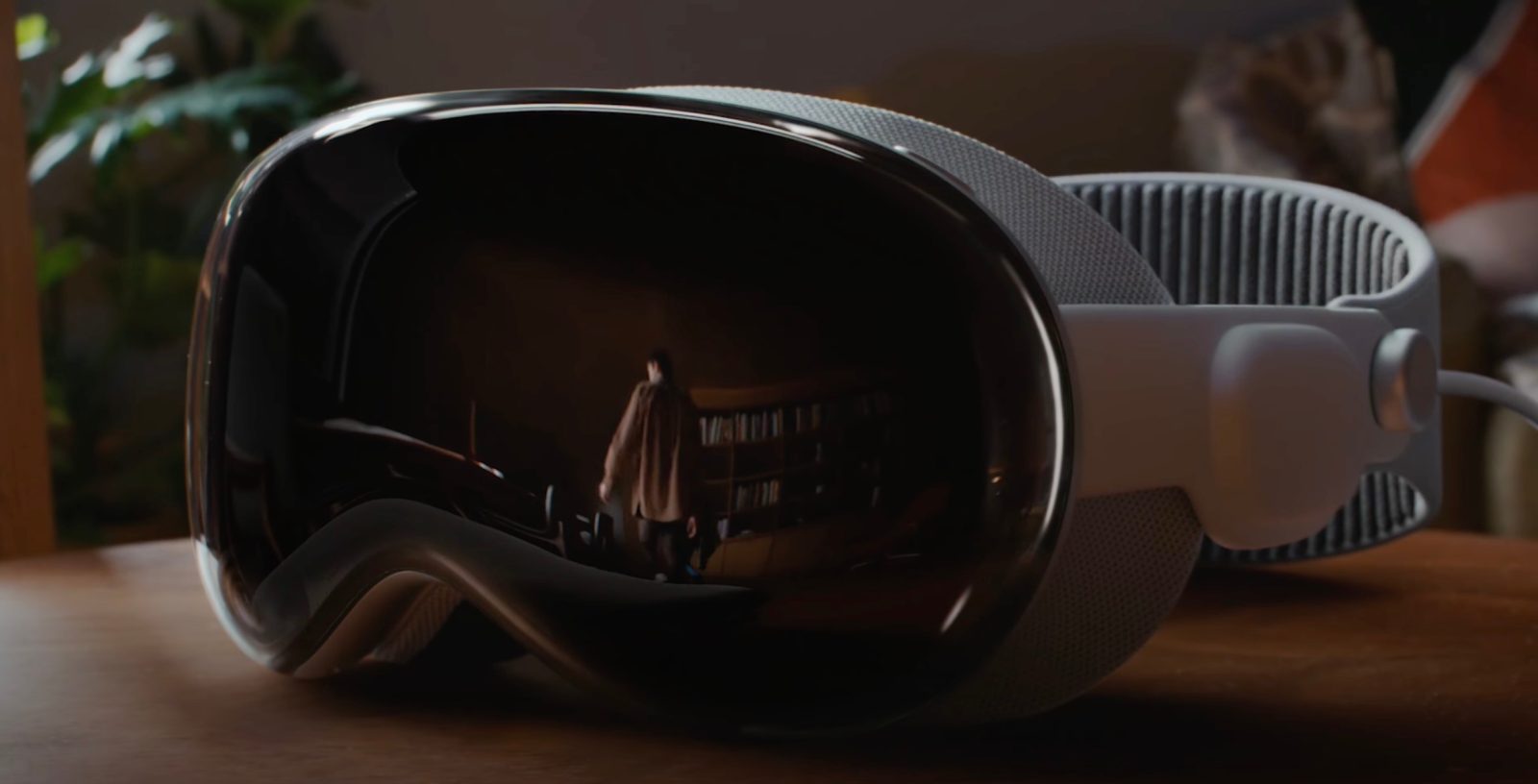
At WWDC 2023, Apple officially unveiled its new Vision Pro headset, which it describes as a “revolutionary spatial computer.” I was in the crowd at today’s keynote when it was announced, and shortly thereafter, I was whisked away on a golf cart to go try out the Apple Vision Pro.
When I arrived at the demo building on the far corner of Apple Park, I was then whisked away once again… into an alternate world powered by visionOS.
The setup process
When I arrived at Apple’s special demo building, I went through the process of being fitted for Vision Pro. This was done using a simple scanning system on an iPhone 14 that was similar to the process of setting up Face ID on a new iPhone. The next step was setting up Spatial Audio, which consisted of scanning my face and both ears.
I had some trouble with the Personalized Spatial Audio part of the setup experience, but it didn’t seem to have an impact on the actual Vision Pro experience. The iPhone 14 just didn’t want to scan my left ear for some reason.
I wear contacts rather than glasses, so I didn’t have to go through the vision testing portion of the experience. For those who wear glasses, however, Apple had vision test equipment set up.
With the boring stuff out of the way, it was time to try the Vision Pro headset itself. I put it on and adjusted the fit to my liking using the Head Band at the top and the flexible strap around the side. It was surprisingly easy to get a snug fit.
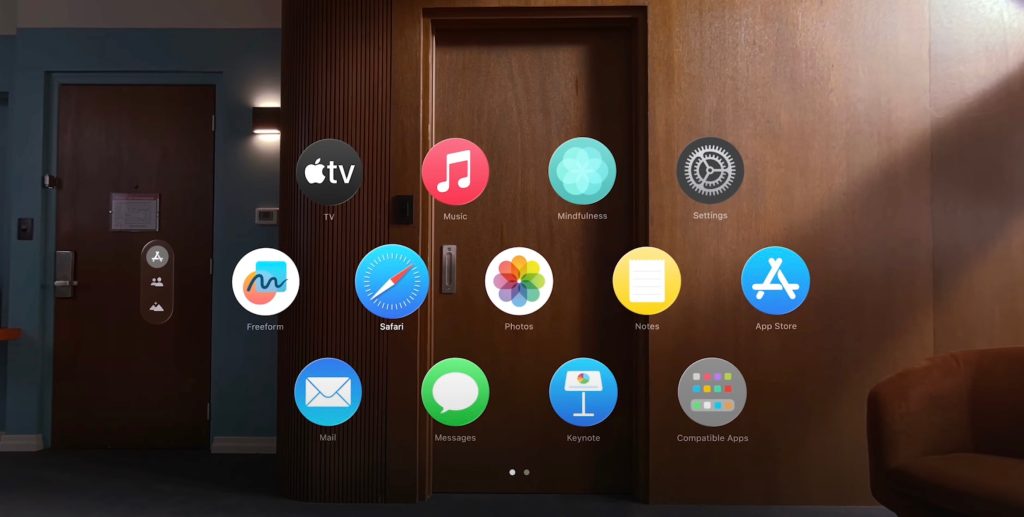
Using visionOS
From there, I started exploring visionOS, the operating system that powers the Vision Pro headset. In my first interaction, visionOS showed Apple’s iconic “Hello” message floating in space. From there, I was taken to the Home View. The home screen is similar to the honeycomb view on the Apple Watch. I used my eyes to move through the grid of apps.
visionOS relies entirely on your eyes, hands, and voice for navigation. I didn’t get to try out any of the voice control features, but the eye and hand control gestures were really impressive. A simple tap of your fingers allows you to select an object. You can zoom in by tapping and pinching just like you would on an iPhone, and you can scroll by flicking your wrist. An open-ended flick of your wrist will activate inertia scrolling just like on iPhone, iPad, and Mac.
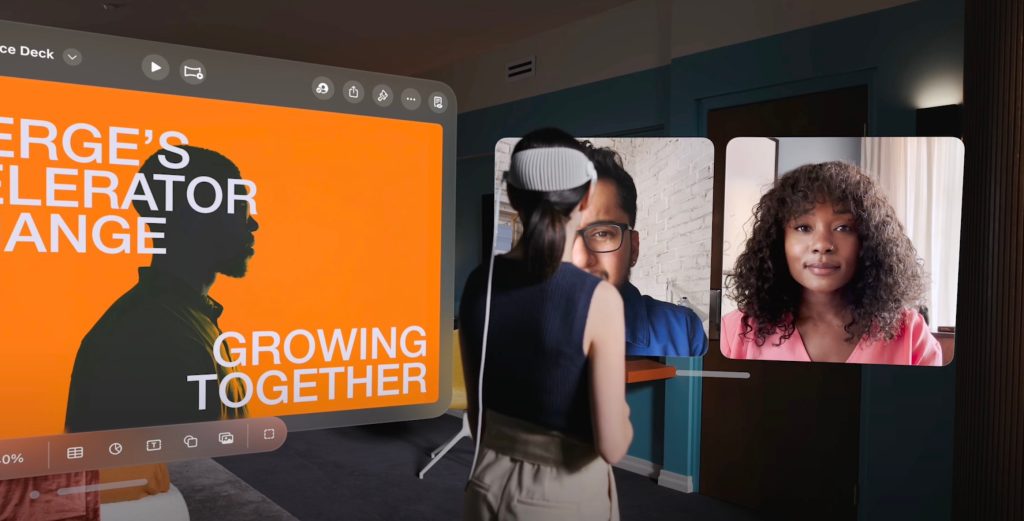
There’s absolutely a learning curve to figuring out how to navigate around visionOS, but even in my 30 minutes with Vision Pro, I became pretty comfortable with most of the gestures. There were a few times that I selected the wrong thing and ended up in the wrong app, but it was easy enough to navigate back to the home screen by simply pressing the Digital Crown.
visionOS allows you to open multiple apps and arrange them as you see fit. The interface for doing this is similar to Stage Manager on the iPad, with a “Window Bar” at the bottom of each app to adjust positioning and an arrow in the corner to adjust the size of each app. You can also bring windows closer to you by tapping with your fingers and pulling them closer.
I was really impressed with how well Vision Pro was able to see my hands and respond to the gestures. I could have my hands resting on my lap, seemingly out of sight of the headset. Still, Vision Pro could pick up on any gestures and respond instantaneously.
But this is also a double-edged sword. One thing Apple explained to me is that there is a challenge to hand-control gestures because the headset has to be able to discern between intentional movements and unintentional movements. This is similar to something like an iPhone display or a Mac trackpad, where the software has to detect intentional vs unintentional movement.
For most people, that learning curve is going to be the most challenging aspect of Vision Pro. I have to imagine that the gestures become second nature at some point, but you’ll have to practice to get there. I’m assuming that visionOS will offer a robust user tutorial on the first run when it launches to customers next year. Apple will also offer demos at its retail stores for customers.
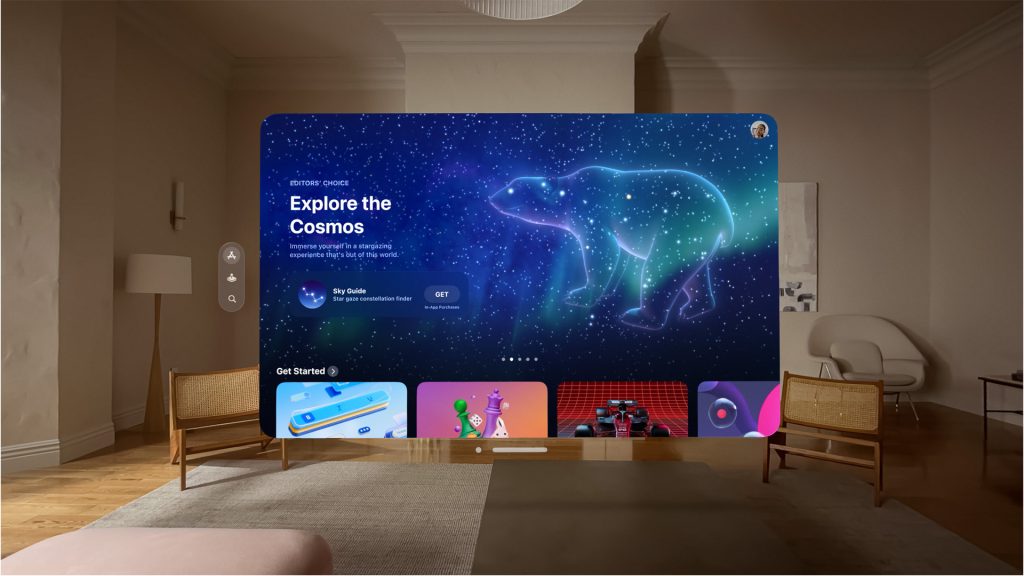
Content consumption and environments
Apple is pitching content consumption as one of the biggest selling points of Vision Pro, and rightfully so. The experience is absolutely incredible. I had the chance to explore a 3D version of Avatar 2 and was blown away by the immersiveness.
You can watch content via Vision Pro in a floating window that you can adjust to your liking, and visionOS will automatically dim the area around that window. You can also put the movie in an environment of your choosing. I got to watch a movie using the Cinema Environment, which made it seem like I was watching in a dedicated home theater. The attention to detail was remarkable, down to acoustic-foam-style textures on the ceiling.
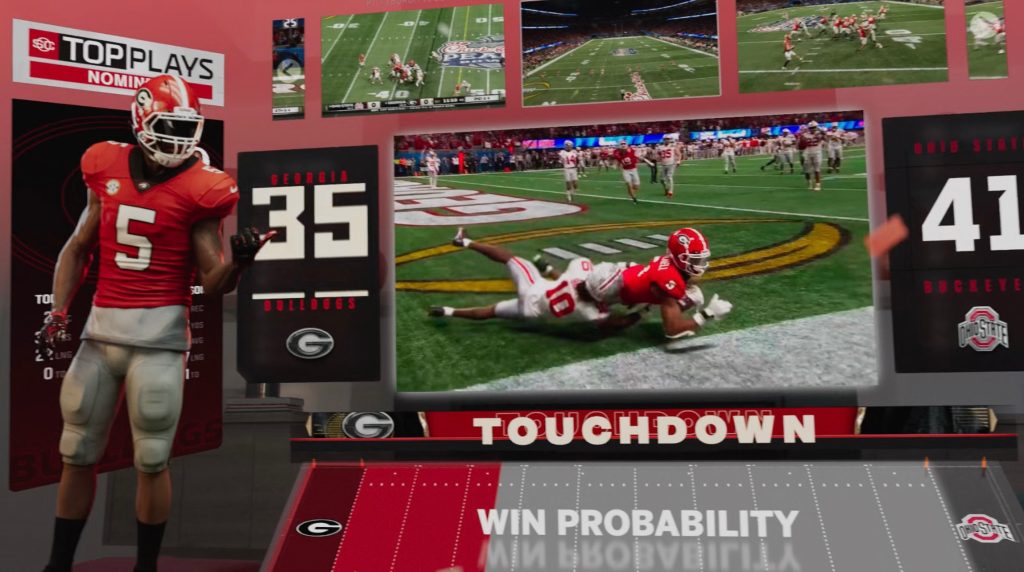
Watching 3D movies with Vision Pro is proof that 3D movies can be incredibly immersive and downright cool if done right. 3D TVs may have been a short-lived fad, but Vision Pro nails the experience.
I also got to watch a clip of an NBA game while wearing Vision Pro, as well as an MLB game. Both of these experiences were incredible. I could look up, down, left, and right and feel as if I was in the stadium, sitting courtside or right alongside the first base line. There was also a clip that was taken inside a music studio with Alicia Keys. I’ve written a lot about how concerts can be a big selling point of Vision Pro, and this demo only further proved that point to me.
Apple explained to me that every video I watched was shot in its own custom video format. It hopes that other companies will adopt this format, but as of right now, it had nothing to announce on this front beyond what it showcased with Disney during the keynote.
Along the side of the visionOS interface is a menu that expands to show “People, Apps, and Environments.” I chose the Environments option and saw one called “Mount Hood,” which was fully immersive and surrounded me on either side and behind me. This is also one of the times I used the Digital Crown to control my level of immersion. At any point, I could raise my hand it would appear on top of the mixed reality interface.
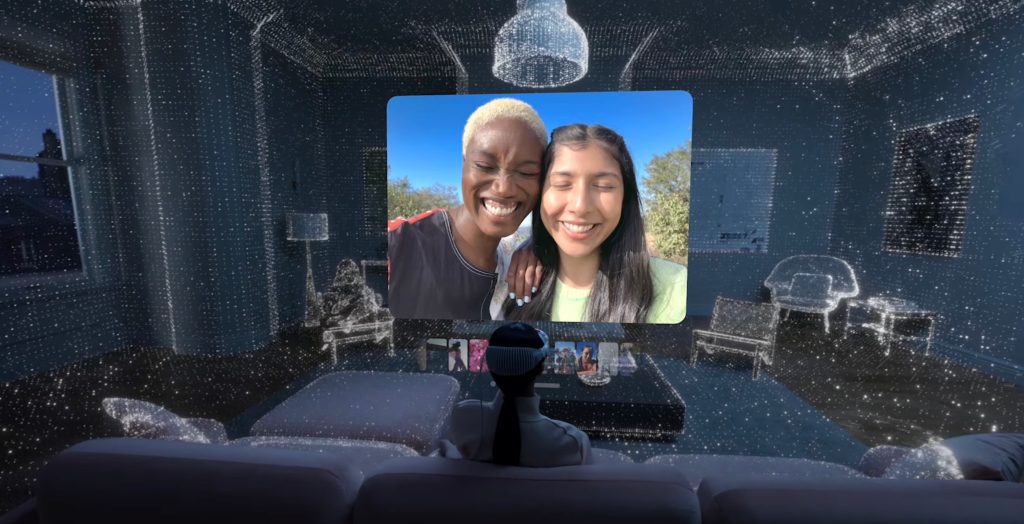
Photos
The Photos app is a key part of the Vision Pro experience. You can view your entire Photos library and use gestures to select photos, scroll between photos, zoom in and out, and more. You can view panoramic photos shot on iPhone that wrap all the way around you. I saw two different panoramic iPhone images that were taken in Iceland and on the Oregon coast.
Spatial photos and videos are captured via the Vision Pro’s built-in 3D camera. Apple says these are meant to let users “capture, relive, and immerse themselves in favorite memories.”
“Every spatial photo and video transports users back to a moment in time, like a celebration with friends or a special family gathering,” Apple explains.
During my demo, I saw two spatial videos: one taken at a kid’s birthday party and another taken at a campfire. These were both very impressive and did a great job at making it feel as if I was in those memories myself. The demos were admittedly a bit creepy since these weren’t my memories, but it’s easy to see how incredible this feature will be when that changes.
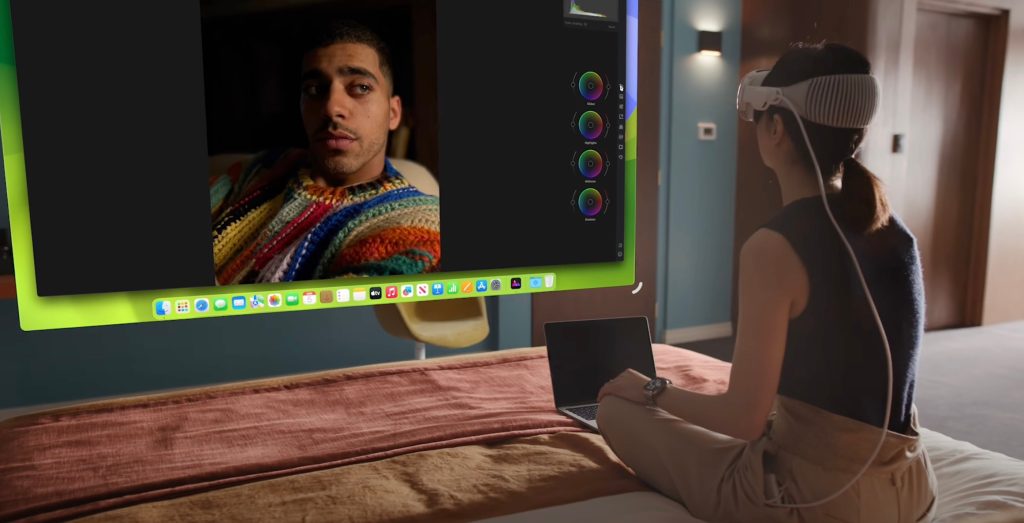
FaceTime
During my hands-on time with Vision Pro, I took a FaceTime call from someone else in the building who was also wearing Vision Pro. This person was reflected in my Vision Pro view using a Persona, which Apple describes as a digital representation of the person created using machine learning techniques.
The Persona was very convincing, but once I started looking more closely, it was clear that it was an artificially generated video. This was especially noticeable around the person’s mouth.
While on the FaceTime call, we collaborated on a Freeform document that included a 3D model of an apartment building. I could look inside that model to view specific details about the design, the corners, the furniture, and more. The 3D model took a while to load and was a bit buggy, which led to my overall mixed experience with FaceTime.
Comfort and motion sickness
Finally, and perhaps most important, there’s the comfort aspect of Vision Pro. As I said at the beginning, the process of getting fitted and putting the headset on is straightforward and easy. But what about actually wearing it?
I wore Vision Pro for about 30 minutes, and my experience was overall positive. The fabric is soft and breathable, there’s a lot of padding around the eyes, and it felt snug (but not too snug) on my head.
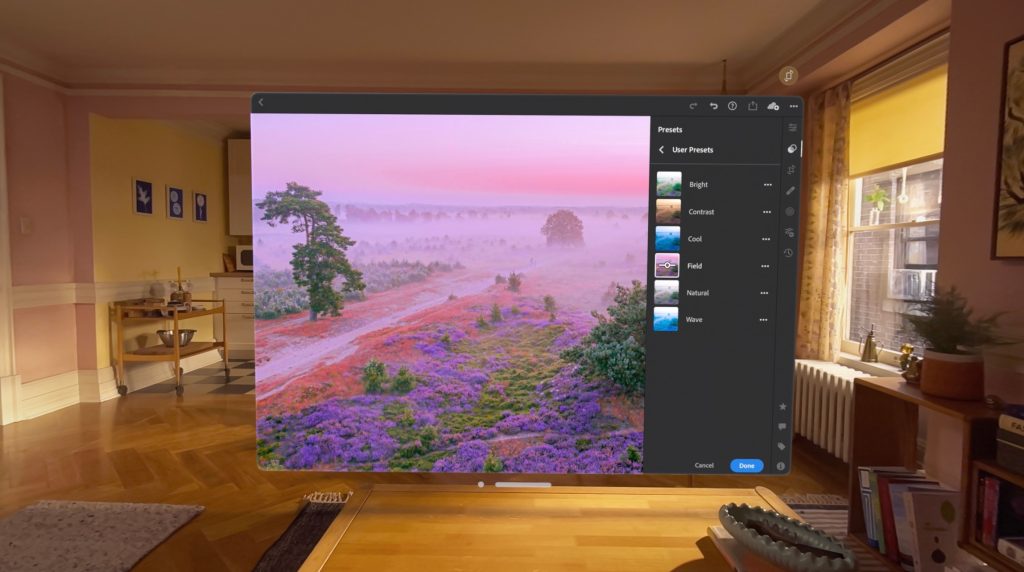
That being said, it’s definitely on the heavier side of things. I could absolutely see getting tired of wearing it after extended sessions. The overall design and fit reminded me quite a bit of AirPods Max and many of the materials were similar.
It’s clear why Apple opted for an external battery pack as well. If the battery pack was integrated into the headset itself, it would be way too heavy and virtually impossible to wear for more than a few minutes at a time.
One thing Apple said today is that it only had a small selection of the Light Seal sizes available during these demos. When Vision Pro launches, however, there will be a vast set of Light Seal sizes available. This will help further perfect the comfort for all users.
Going into today, I was really concerned about motion sickness while wearing an Apple headset. I get motion sick incredibly quickly in a car or an airplane. But in my 30 minutes wearing Vision Pro, I didn’t experience any motion sickness whatsoever.
Apple says that the combination of two 4K displays and incredibly low latency are big factors in preventing people from getting motion sick while wearing Vision Pro. The ability to move in and out of virtual reality and augmented reality also plays a major role in reducing motion sickness and fatigue.
Other tidbits
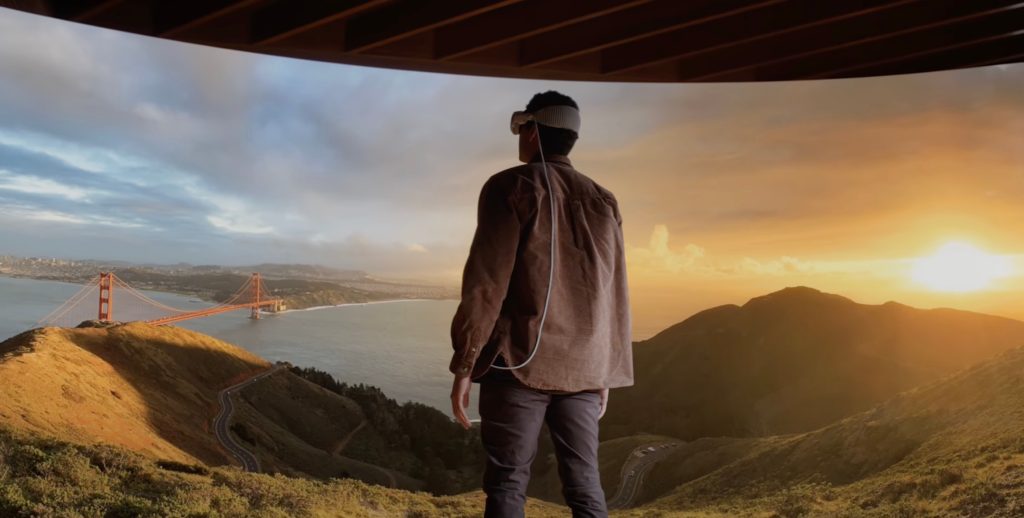
- One of the most impressive parts of my time with VIsion Pro was the sound quality. The headset features two individually amplified drivers inside each audio pod. Paired with the immersive content, Spatial Audio was stunning. Far better than Spatial Audio today using AirPods.
- I took part in a one-minute mindfulness meditation that featured immersive animations and guided breathing exercises. I definitely needed this after the two-hour keynote!
- One of the demos saw me interact with a butterfly, which flew toward me and landed on my hand. There was also an Encounter Dinosaurs interactive experience, during which I walked toward the dinosaur and “touched it.” This was cool but a bit gimmicky. It’s a fun proof of concept for what could be possible in the future, though.
- I can’t speak to battery life since I only wore Vision Pro for 30 minutes. My headset was connected to the external battery pack, and it didn’t get in my way at all. I was able to get up and move around and just drop the battery pack into my pocket.
- I didn’t get to try any of the Mac-focused features, but I’m eager to learn more about those in the future.
- I didn’t get a chance to see anyone else wearing Vision Pro, so I didn’t get to see the EyeSight part of the experience.
- I saw an Apple Immersive Video demo that wrapped me in a 180-degree view as if I was flying above a city, under the ocean, in a field full of wildlife, and more.
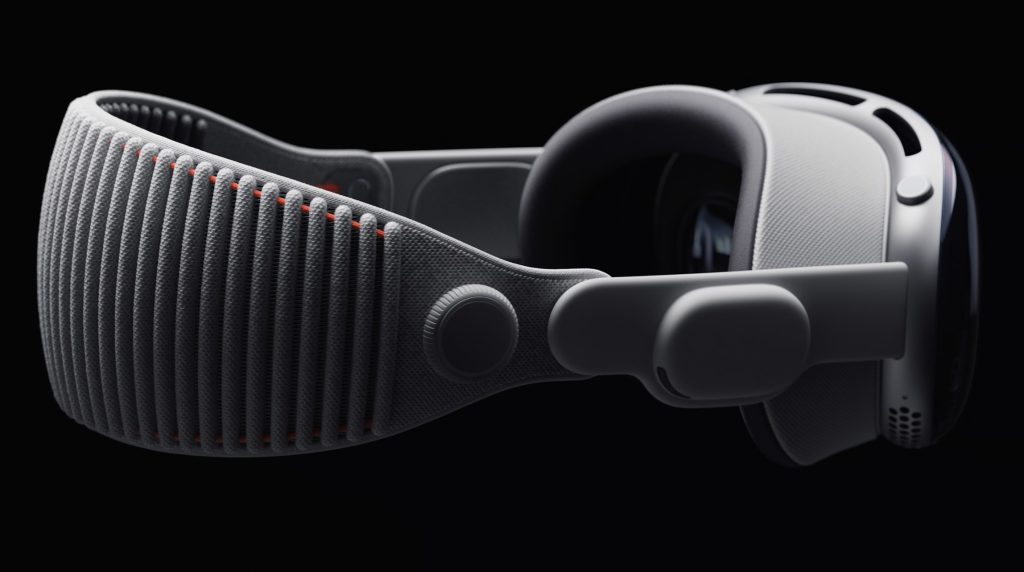
Wrap-up
When I took Vision Pro off after my 30-minute demo, I felt a bit discombobulated. Not necessarily in a bad way, but it was a feeling I’d never experienced before. I had just experienced something that transported me to another world… while also keeping me somewhat connected to the “real world” around me.
Throughout my entire experience with Vision Pro, Apple repeatedly emphasized the various ways the headset keeps you connected to the world around you. For instance, I could look to my left and right to see the two other people in the demo room with me.
Another tell-tale sign of Apple’s goals is that nowhere in the press release does Apple even mention the word “headset.” The company instead refers to it as a “spatial computer” and refers to visionOS as “the world’s first spatial operating system.”
This is key to the Vision Pro experience, and it’s something that sets Apple apart from other players in this space. The hybrid of virtual and augmented reality strikes a really good balance of immersiveness while keeping you engaged with people around you.
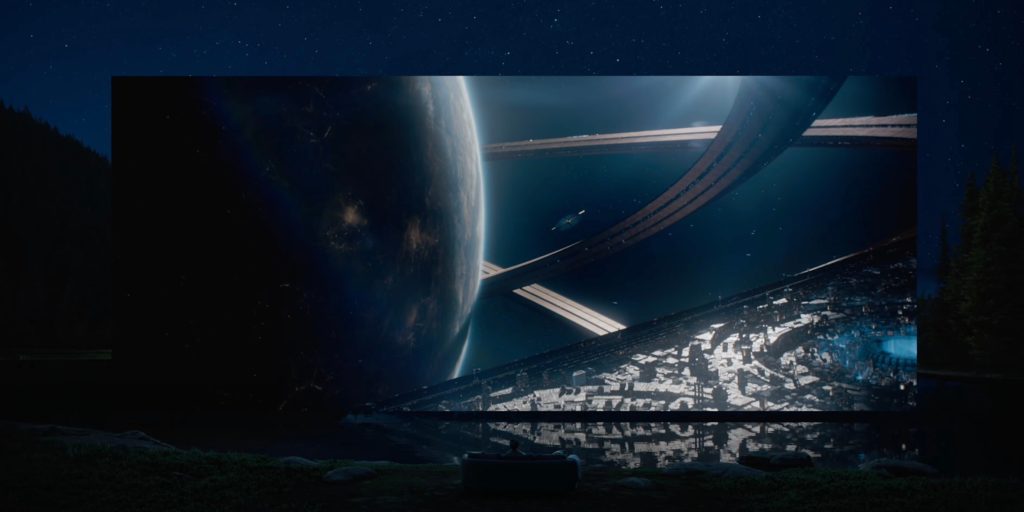
In many ways, Vision Pro and visionOS are the culmination of years of AR and VR features that have gradually made their way to the iPhone since ARKit’s introduction in 2017. Apple says that the iPhone is already the largest AR platform in the world, and visionOS takes advantage of many of those features.
Do some features of Vision Pro seem gimmicky? Absolutely. But much of what I saw today is proof of just how impressive mixed reality can be when it’s done right, using top-of-the-line hardware and software. As the ecosystem expands, some of the content that may seem gimmicky can be replaced with incredible experiences.
The hardware of Vision Pro is absolutely industry-leading. I couldn’t see a single pixel on the 4K displays, and even the edges of the content on either side of me were crisp and clear. The combination of those displays and the powerful M2 and R1 chips inside mean that Vision Pro excels at everything it does.
Vision Pro won’t be a runaway success, and I think even Apple knows that. The company likened the $3,500 price to that of the original Mac, which sold for $2,495 in 1984. In 2023 dollars, that would be over $7,000.
But even if there aren’t lines wrapping around Apple Stores on launch day, Vision Pro will give Apple a way to get its work in this market out into the wild. Developers can create apps, movie and TV studios can create content, and Apple can learn more about what people want from a product like this.
I was a major skeptic of Apple’s plans to enter the VR/AR headset market. Vision Pro is still months away from being ready for prime time, but what I experienced during my hands-on today left me very impressed. I’m excited to see the final product sometime early next year.
I’ll have more thoughts on visionOS and Vision Pro later this week when I answer some questions from 9to5Mac readers. Have anything you want to know? Let me down in the comments or on Twitter or Mastodon.
Follow Chance: Twitter, Instagram, and Mastodon
FTC: We use income earning auto affiliate links. More.


Comments